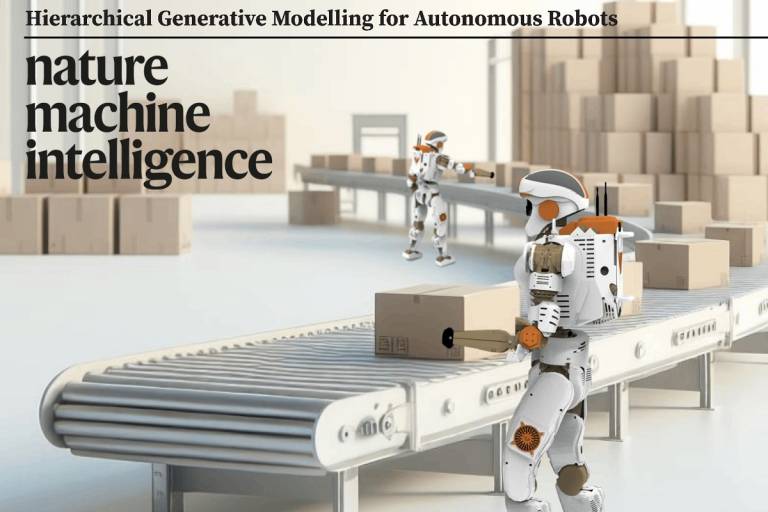Interdisciplinary research team reveals human-like AI system for autonomous robots
11 December 2023
Associate Prof Alex Li (UCL Computer Science), Prof Karl Friston (UCL Neuroscience) and Dr Kai Yuan (Embodied AI Lab, Intel) have made important progress in autonomous robot technology, creating an AI system that lets a full-body humanoid robot do tasks more like a human.

Drawing inspiration from human motor skills, this new system – “hierarchical generative modelling” – breaks down complex tasks into smaller steps. Similar to how we plan and execute movements, the robot can think about the overall goal, e.g., walking through a door, and at the same time control fine movements of each limb precisely, e.g., moving arms and legs.
Imagine a robot being asked to move a box, open a door, and then kick a ball. This new method helps the robot understand and perform these tasks by organizing them into different levels of planning and action – all at different time scale, similar to how our brain reasons about the world, plans and controls our movements. The robot can handle each step of the task, from thinking about the overall goal to controlling its limbs to do the actual work.
This approach is significant because it allows robots to carry out complicated tasks more efficiently and adapt better to unexpected changes, such as obstacles or uneven surfaces. The researchers tested this by having the robot move around obstacles, recover from being pushed, and even complete tasks with a damaged foot.
For his innovations and contributions to the field, Dr Alex Li, Associate Professor from UCL Computer Science, has consistently pushed the boundaries of AI-powered robotic capabilities. His leadership in the project, including collaboration with the distinguished neuroscientist Professor Karl Friston, has resulted in a pioneering model that enhances the autonomy and adaptability of robotic systems.
Professor Friston, known for his influential work in brain imaging and neuroscience, played an essential role in this research. His expertise in understanding how the human brain processes and controls movement has been instrumental in creating a more intuitive and efficient method for programming robots to perform complex tasks. This collaboration marks a significant milestone in the integration of neuroscience principles into robotic design, opening new possibilities for more sophisticated and adaptive robotic systems.
Alex Li said: “As we venture into this new era of AI powered robots, this work of hierarchical generative model is a milestone that blends neuroscience with robotics. It opens a pathway for robots to handle complex tasks at a level of autonomy previously unimaginable. This integration of neurological principles into robotic systems revolutionises how we interact with and utilize robots in daily life.”
Karl Friston added: “This seminal work foregrounds the role of generative models in deep planning within real physical systems. It leads to a promising new direction in the realm of Generative AI, particularly in embodied applications like robotics".
This interdisciplinary research team plans to try this system in real-life robots, which could lead to robots that are more helpful and work better in different environments, such as logistics, warehousing, asset management, manufacturing and more.
 Close
Close

